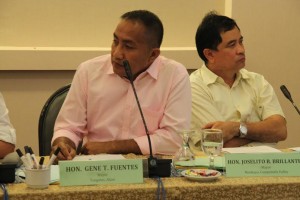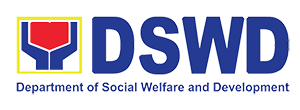
MANILA – Following their experience in Typhoon Yolanda, Mayor Gene Fuentes, local chief executive of Tangalan, Aklan, is advocating for the use of the community-driven development (CDD) strategy in disaster preparation and recovery.
CDD is a development strategy that puts power back in the hands of the people by giving them the opportunity to decide on issues related to their local development and to manage resources to implement sub-projects that address needs they identified. This is the approach employed by the Kapit-Bisig Laban sa Kahirapan-Comprehensive and Integrated Delivery of Social Services (Kalahi-CIDSS), a program of the Department of Social Welfare and Development (DSWD).
According to Mayor Fuentes, CDD served as the key that helped their town prepare for and recover from the after-effects of the typhoon.
“Isa sa pinakamagandang nagawa ng Kalahi¬-CIDSS is iyong disaster preparedness (One of the good things that Kalahi-CIDSS did is promote disaster preparedness)”, he said.
He explained that because the program trained the citizens to work with each other and with their local government unit (LGU), they had no problems in pre-emptive evacuation as coordination was easy for them. They were also able to mobilize the Kalahi-CIDSS volunteers to help them in information dissemination.
He said, “Nung dumaan sa amin ang Yolanda, malaki talaga ang tulong ng mga volunteers ng Kalahi-CIDSS dahil na-spread out namin ang preparation. That is why we had zero casualties at dalawa lang ang injured (When we were hit by Yolanda, the Kalahi-CIDSS volunteers were a big help because we were able to spread out our preparation. That is why we had zero casualties and only two were injured)”.
This is in light of the fact that Tangalan was within the 50-kilometer radius path of Typhoon Yolanda, with Aklan as one of the provinces hit hardest by the super typhoon.
Furthermore, none of the infrastructure projects constructed through the Kalahi-CIDSS experienced major damage because of the disaster. Mayor Fuentes credited this to the fact that the communities themselves chose, implemented, and maintained their chosen projects. In a statement he made in 2014, the soil protection sub-project in Barangay Baybay in Tangalan directly protected the village from Yolanda.
In his previous statement, he said, “This is proof that Kalahi-CIDSS is world standard… Kalahi-CIDSS buildings are the only ones that are still intact. Even the world’s strongest typhoon failed to destroy Kalahi-CIDSS buildings”.
Mayor Fuentes said they were even able to use CDD in post-disaster rehabilitation. When the DSWD employed its Emergency Shelter Assistance (ESA) program to provide assistance to the families whose houses were partially or totally damaged following Yolanda, Tangalan was one of the fastest to comply with the requirements because the people themselves developed the list.
In advocating for CDD as a disaster preparedness and recovery strategy, Mayor Fuentes had this to say: “Masarap rin na ikaw ang mayor, iyong consitutents mo walang nalagasan nang dumaan ang napakalakas ang bagyo na siguro sa ating pamumuhay sa mundo ay iyon na ang pinakamalakas na tumama sa atin ”.
Mayor Fuentes said that he plays an active role in the implementation of Kalahi-CIDSS, even helping out in solving any problems that surfaced.
He said, “Kung hindi ka mag-troubleshoot, lagot ka sa mga tao ”.
Since 2012, 4,818 households stand to benefit from Kalahi-CIDSS projects in Tangalan. Since 2012, it has received P25.67 million community grants, funded in part through the Millennium Challenge Corporation of the US government, which they utilized for the implementation of 18 sub-projects, 12 of which have already been completed. They are also set to implement 7 sub-projects, three of which are for disaster risk reduction and management, through the national community-driven development program, the scaled-up version of Kalahi-CIDSS. ###


